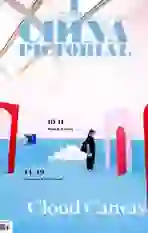Art Innovates Life in the Digital Era
2020-08-10byGaoPeng
by Gao Peng
Since the 20th century, abundant technologies du jour have endowed artists with a wealth of inspiration and creativity. The proliferation of digital language, a wider spread of information, and new media art have fundamentally changed traditional lifestyles as well as the ways to consume art. Driven by science and technology, methods of displaying and distributing art have been constantly changing.
Ljubljana, the capital of Slovenia, has never attracted much international attention. However, by digitalizing its art museums, the little-known city earned a solid reputation globally. Before the turn of the 21st century, when the internet was yet to become popular, Ljubljana was already working to digitalize its local museums through the program “Ljubljana: Open-Air Museum.”
The “Open-Air Museum” project in Ljubljana was launched in 1993 and went online in 1996. In contrast with many other virtual art galleries, the Ljubljana project focused on the whole picture of art museums across the city rather than any single art gallery. The exhibition “Napoleon Says: Illyria Arise!”presented by the City Museum of Ljubljana in 2009 provided one example. An ancient Mediterranean region occupied by Illyrian tribes became known as Illyria, and the locale became so mysterious in history that the word was often borrowed for fictional countries in literature. It was even the setting for the Shakespearean play Twelfth Night.
As the administrative center of the Illyrian Provinces, Ljubljana preserved a considerable wealth of art, precious manuscripts, and maps from Napoleons French Empire. The 2009 exhibition “Napoleon Says: Illyria Arise!”which commemorated the 200th anniversary of the Illyrian Provinces highlighted the longing of the people of the Balkans to escape foreign control and provided evidence on the spread of Pan-Slavism. Such an exhibition breaks down national boundaries and enables important academic materials to serve the cultural development of the whole world.
If Ljubljana is a representative of early digitalization of art galleries, the Google Art Project marked the maturity of virtual museums. Launched on February 1, 2011, the Google Art Project provides an online platform through which the public can access high-resolution images of art housed in partner museums. It now includes many prestigious art museums and galleries from around the world. It presents global users a modern and digital avenue to enjoy art and brings a treasure trove of art to the screens of anyone with an internet connection. The program, which enables works to be viewed at incredibly high levels of detail, also offers a “Museum View”function to experience the indoor environment through virtual tours of renowned museums. The companys “street view” technology, which serves the program, even captures landscapes near the museums to maximize viewersexperience.
Advances in science and technology have shifted online museums from sharing classic works to creating their own offerings thanks to the increased maturity of communication technologies. Todays online museums transcend brick and mortar to create new exhibitions. In 2015, the Beijing-based Today Art Museum, Chinas first private museum for contemporary art, launched a Future Gallery project. Future Gallery is a new conceptual art museum located in the cloud. This project took a giant leap forward in terms of both technology and artistic concepts through 360-degree panorama exhibitions and online display of digitalized art. Everything in the gallery was retooled by artists for the virtual project rather than simply moving physical pieces from offline to online.
As early as 1974, the International Council of Museums defined museums as non-profit, permanent institutions in the service of society and its development, open to the public, which acquire, conserve, research, communicate and exhibit the tangible and intangible heritage of humanity and its environment for the purposes of education, study and enjoyment. Digitalization makes it easier to “store” physical works on the internet while enabling more people around the world to view works in a larger“space” with more viewing time permitted. However, the blossoming technology surely has much more to offer. Innovation in digitalizing museums around the globe continues unabated around the clock.
